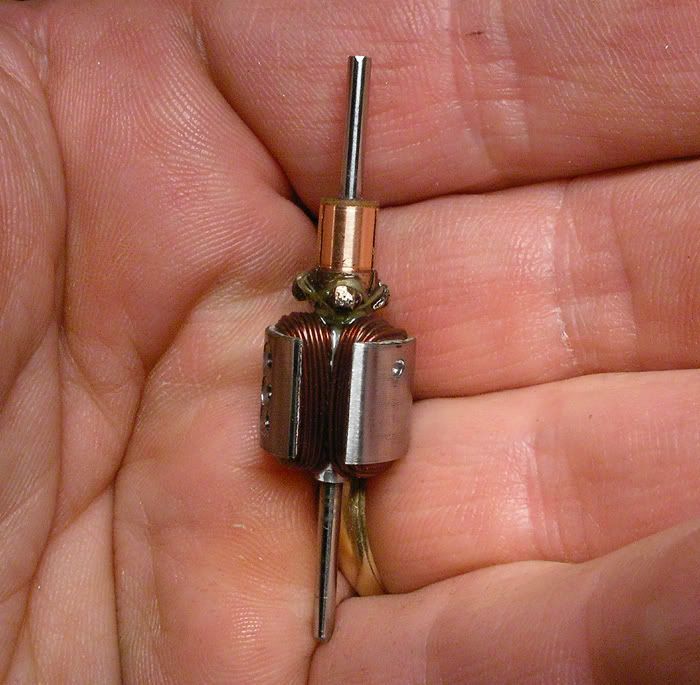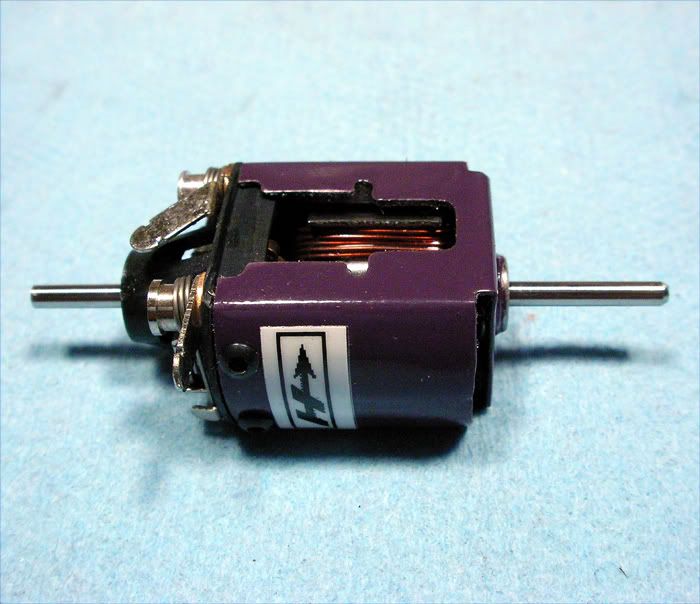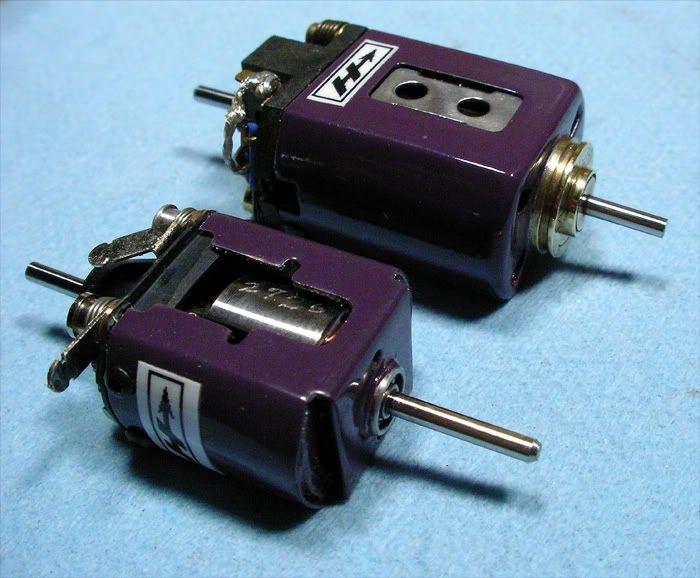Thanks Ed, that's more than a little over the top but thanks anyway

Hi Kelley,
The arm looks great...even more so for a first attempt. If you have a multimeter, set it on "continuity", hold one probe against a com segment
(use the side of the probe instead of the point so you don't mar the com) and touch the other probe to the stack and the shaft. You should get no reading, if you do...there's a short somewhere and most likely where the wire crosses over the edge of the stack. If you have a short, the arm will either not run or will run poorly. If you have no shorts, the arm will run and that's pretty much how easy it is to tell if the arm is OK. The rest of it is a balance between resistance (measured in ohms) and power (a function of how many turns you have). Fatter wire will be lower in resistance per length than skinny wire...BUT...more turns means more power. An electromagnet with more turns of wire will be more powerful than one with fewer turns...but longer lengths of wire (more turns) will have more resistance to current flow. Since we're dealing with (usually) 12V, you'll fall into a "range" of winds for that voltage that will work with varying degrees of either power or RPMs, leaving aside other considerations such as magnet strength, airgap, spring tension and brush size, can efficiency for producing a strong field etc. That's as much as I have figured out so far

you mean not enough winds per gauge of wire?
Yes, 50 turns of even #30 wire will be pretty light. 50 turns...even 55 turns of #29 is a nice wind. Don't worry though, try the arm out and see what happens. It's not like it should vaporize or anything. It's a good idea to run these things slowly at first when testing on a power supply, but it's a real thrill when they spin-up for the first time! Expect some arms to fail (I have had MANY), but try and figure out why they failed and your next arms will get better and better.
If I may ask what you’d recommend for both a single and double wind?
As per above, a good all-around single wind for many different types of motors is 50 turns of #29...you could even go as low as 45 turns as long as the motor is epoxied and tied. If you want to try a double wind, try 26 or 27 double turns of #29 or 35-ish double turns of #30. These are only suggestions and you may add or remove a wind as you see fit. Use more caution when spinning these up though as they will be fast winds. Be sure to tie and epoxy these winds especially before spinning them up as they will definitely have enough RPMs to throw a wire. The faster the motor runs, the quicker the weak points will show up!
If you have a multimeter, you can also touch a probe to two segments at a time while the multimeter is set to resistance (ohms) and at the smallest range the meter has since you'll be reading tenths of an ohm. Down in the .1-.2 ohm range is HOT, .6 to .7 is mild. Some inexpensive
digital multimeters will give good readings even at those low ranges.
-john





 This topic is locked
This topic is locked













